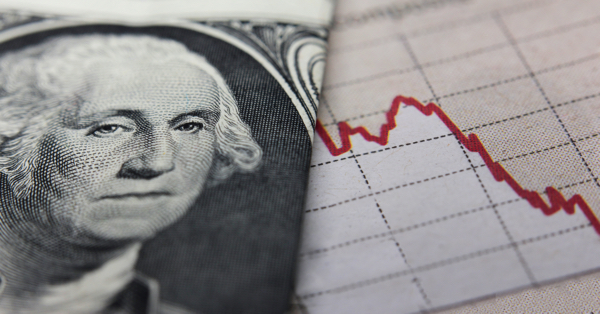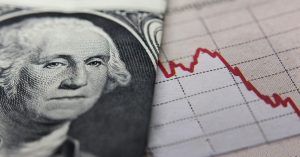
Thursday May 24: Five things the markets are talking about
Global stock markets remain under pressure as investors shun risk assets for relative safe havens.
Rising Italian bond yields, fading prospects for the North Korea summit, disintegrating EM currencies, and deteriorating E.U economic data continue to wreak havoc amongst the various asset classes.
Note: Italian President Mattarella has given PM mandate to Giuseppe Conte to try and form a government.
The yield on U.S 10-year Treasuries have stabilized around +3%, while the euro’s ‘single unit’ has found some traction after yesterday’s release of the FOMC minutes, which indicated some policymakers saw that the Fed funds rate could reach its neutral level before too long. However, U.S officials also saw trade and fiscal policies as ‘sources of uncertainty.’
Turkey’s lira ($4.6671) has resumed its slump as the market continues to weigh yesterday’s intra-meeting rate hike was not enough to stem losses, while elsewhere, safe-haven assets including gold and Japan’s yen continue to climb, as crude oil prices slips.
1. Stocks mixed results
In Japan, the Nikkei fell to more than two-week lows overnight as automakers slumped after the Trump administration launched a national security investigation into car and truck imports that could lead to new U.S tariffs. The Nikkei ended -1.1% lower, while the broader Topix fell -1.2%.
Note: The Nikkei volatility index soared to 18.29, the highest level since mid-April.
Down-under, Aussie stocks snapped a five-day losing streak on Thursday, aided by gains for gambling equipment maker Aristocrat Leisure that helped outweigh a continued fall for financial stocks. The S&P/ASX 200 was up +0.1%. In S. Korea, the Kospi slid -0.24% on automakers.
In Hong Kong, stocks ended higher, helped by services and energy companies, though gains were capped amid renewed concerns over Sino-U.S trade tensions. At close of trade, the Hang Seng index rose +0.3%, while the China Enterprises Index gained +0.5%.
In China, stocks extended losses, as caution prevailed amid renewed concerns over China-U.S trade tensions. The blue-chip CSI300 index closed down -0.7%, while the Shanghai Composite Index ended -0.5% lower.
In Europe, regional bourses have opened a tad higher, with one exception thus far, the FTSE 100. It’s no surprise that automotive stocks again are in focus, this time negative following President Trump considering tariffs. An appointment of PM in Italy is lending some support in stocks.
U.S stocks are set to open in the ‘black’ (+0.1%).
Indices: Stoxx50 +0.4% at 3,557, FTSE -0.1% at 7,784, DAX +0.2% at 12,996, CAC-40 +0.5% at 5,591; IBEX-35 +0.6% at 10,082, FTSE MIB +0.9% at 23.14, SMI +0.4% at 8,833, S&P 500 Futures +0.1%

2. Oil under pressure as chances rise of OPEC raising output, gold higher
Oil trades under pressure, driven lower by the prospect of the first increase in OPEC output in two-years in the face of concern over supply from both Venezuela and Iran, while a surprise rise in U.S crude inventories raised doubt over seasonal demand.
Brent futures are down -59c at +$79.21 a barrel, while U.S crude futures have eased -41c to +$71.43 a barrel.
Currently, the market chatter about a possible OPEC supply increases after the June meeting has put a brake on oil prices for the time being. The +$80 handle remains a massive psychological hurdle to overcome.
Note: OPEC may decide next month to increase oil output to make up for reduced supply from Iran and Venezuela and in response to concerns from Washington over a rally in oil prices.
Yesterday’s Energy Information Administration reported U.S commercial crude oil inventories (ex-those in the SPR) increased by +5.8m barrels from the previous week. At +438.1m barrels, U.S crude oil inventories are in the lower half of the average range for this time of year.
Ahead of the U.S open, gold prices are holding gains, buoyed as the dollar extended losses after yesterday’s Fed minutes hinted at a ‘dovish’ approach to interest rate hikes. Spot gold has edged up +0.1% to +$1,293.93 per ounce, after gaining nearly +0.2% in the previous session. U.S gold futures for June delivery are up +0.3% at +$1,293.30 per ounce.

3. Sovereign yields under pressure
Italy continues to take center stage in the sovereign bond market as dealers focus shifts to the implementation of the coalition’s ambitious agenda and its potential ministers. Will the incoming government sully Italy’s relations with E.U?
Note: Italy’s government debt remains heavily dependent on support from the ECB’s bond purchases, and the country’s wider financial system is more closely linked to government debt markets than in much of Europe.
For German Bunds, the safety bid continues to gather pace as the Italian BTP sell-off spills over into the core market. Germany’s 10-year Bund yield has decreased -3 bps to +0.53%. The gap between Italy and Germany’s government bond yields has climbed to +192 bps, the highest in nearly a year – the spread has increased more quickly than at any time in the last five years.
Elsewhere, the yield on U.S 10-year notes has gained +1 bps to +3.00%, the biggest gain in a week. In Germany, the 10-year Bund yield has advanced +1 bps to +0.51%, while in the U.K, the 10-year Gilt yield has increased less than +1 bps to +1.44%.

4. Dollar remains dodgy on trade talks
Trade war talks are back and the dollar is under pressure. Reports that the U.S. commerce department has opened up “a section 232 investigation into the imports of cars to determine their effects on America’s national security” is ringing some alarm bells given what happened when the U.S. imposed steel and aluminum tariffs in March. Many view this proactive move as a pretty big escalation in the trade war narrative. EUR/USD is up +0.2% at €1.1732, USD/JPY is down by -0.5% at ¥109.60, while USD/CHF is down -0.2% at $0.9935.
With U.K retail sales rising by much more than expected last month (see below) has sent sterling higher. GBP/USD has rallied +0.6% to £1.3420, from £1.3384 before the data, while EUR/GBP falls to €0.8754, from €0.8769 beforehand.
Yesterday’s sizable emergency interest rate hike by Turkey’s central bank temporarily took some pressure off the lira in the near term and goes some way’s to improve confidence in the central bank’s ability to act. However, the pressure on the TRY is expected to remain high until the elections on 24 June. The lira has resumed its falls today after gaining sharply late Wednesday, with USD/TRY last up +2.6% at $4.6926.
Note: Fixed income dealers are pricing in another rate hike at the monetary policy meeting on 7 June, if not earlier, should the lira continue to remain under pressure.

5. U.K retail sales rebounds in April
Data this morning showed that U.K retail sales rebounded in April, recovering from a spell of bad weather in the previous month.
According to the Office for National Statistics, U.K retail sales climbed +1.6% in April, with all sectors apart from department stores picking up from subdued March levels. Gas sales also picked up after the poor March weather affected travel.
Note: The headline print beat market expectations of an on-the-month rise of +0.8%.
Today’s headline print marks a bright spot among Q2 data that has so far been mixed. CPI data released yesterday revealed the slowest growth in more than 12-months.
Note: The U.K economy is expected to lag behind its peers this year as uncertainty over the terms of its future relationship with the E.U weighs on activity and investment.


